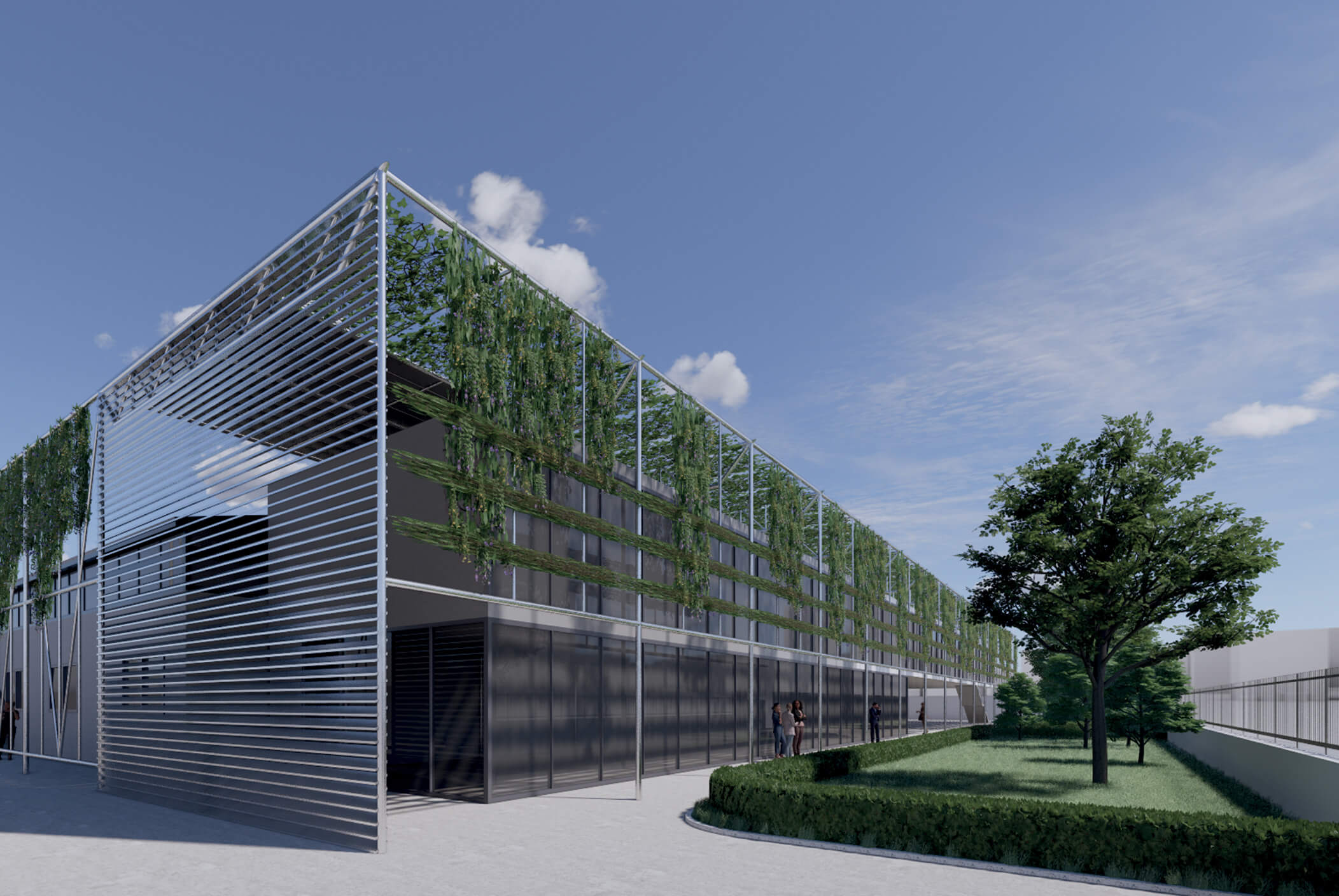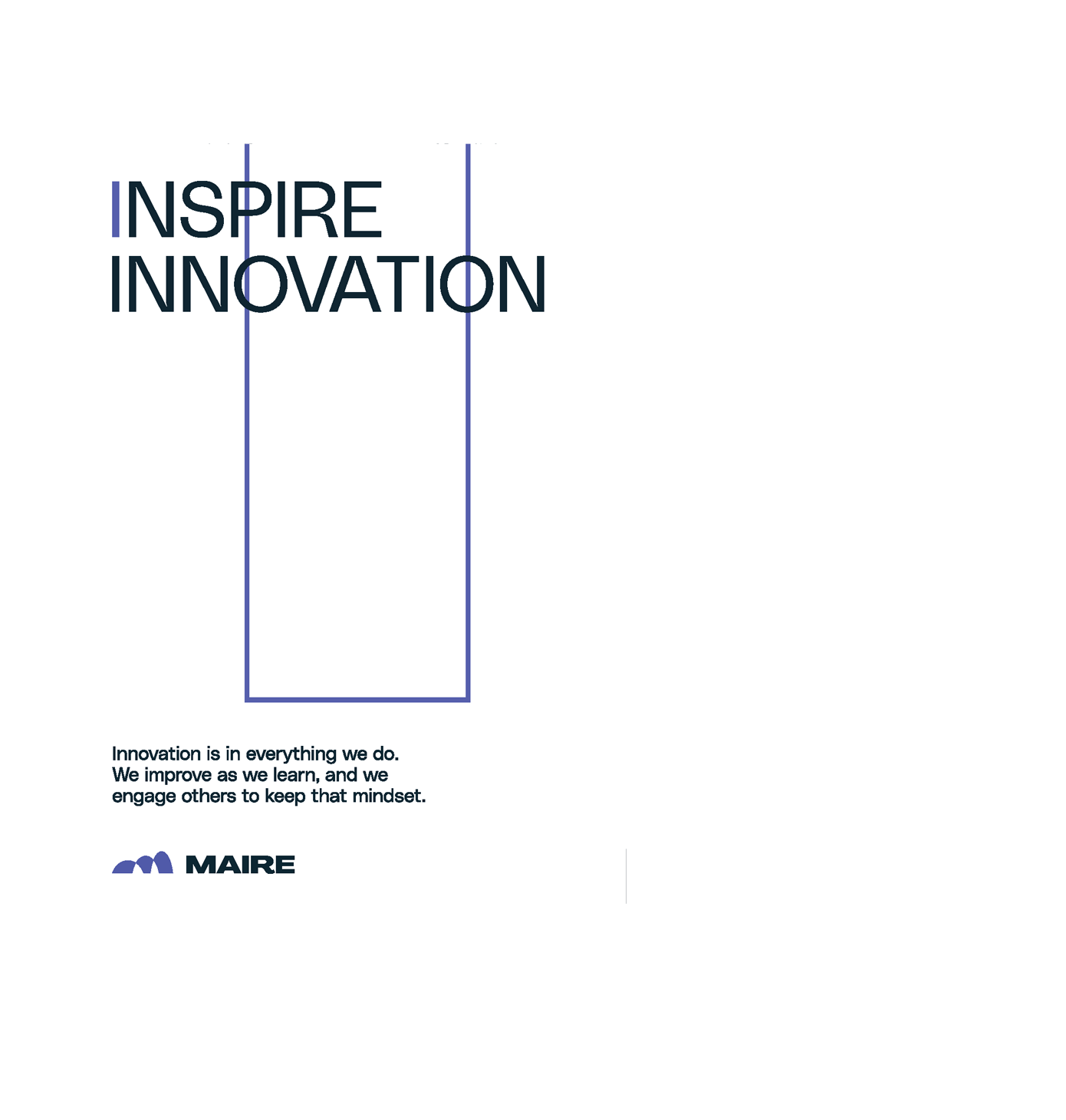
From strategy to the adoption of emerging technologies: Chief Technology Innovation Officer Antonio Batistini shares how MAIRE transforms innovation into a collective process, focused on the future and the market.
«Innovation is in everything we do. We improve as we learn and engage others to maintain this mindset. » This motto – at the heart of the new issue of EVOLVE – is dedicated to the theme of innovation as a strategic and cultural driver within organizations. At MAIRE, innovation is not just a goal: it is a day-to-day approach, a way of being and acting that spans all levels of the company, from technological research and operational practices to the management of our human resources.
To better understand how this vision translates into concrete, future-oriented processes, we met with Antonio Batistini, the Group's Chief Technology Innovation Officer. At MAIRE, he is the soul of the Innovation Management Team, a broad and articulated structure that coordinates the Group's main levers of innovation: from the Green Innovation District, the future heart of research and development activities, to the management of the innovation portfolio, including intellectual property, open innovation partnerships and the entire technology development chain. Its task is to make innovation a systemic, continuous, and scalable process inspired by real market needs.
Let's start with a definition: what is innovation really, in your opinion?
Indeed, innovation is often confused with invention. Innovation is not synonymous with invention, however. Innovation is the combination of three fundamental elements: an invention, the value it creates for the company, and the value it brings to the customer who chooses to use it. These three elements must coexist.
It's like a Venn diagram with three circles: innovation only occurs where the three areas overlap. And this applies not only to a product or technology, but also to a business model or customer experience. Improving the perception or use of a product at the end customer level can be an innovation: even better if it generates profitable and sustainable growth for the company.
Consequently, innovation is not merely a new invention, but the ability to create something that also has distinctive value for those who use it. If this element is missing, it remains an academic invention, an end in itself. Furthermore, innovation does not belong to any one per- son in a company, not even the CTO. It is not a process dictated from above, nor is it the prerogative of an "enlightened" few. It is an inspirational and collective process, where anyone can propose an idea or make a contribution.
How is the innovation process structured within MAIRE?
Clearly, for an idea to become a viable and marketable innovation, it is necessary for it to follow a structured path. At MAIRE, we work to optimize this process using the "stage and gate" model, which involves stages of validation and progressive decision-making, from the definition of the idea (Technology Readiness Level 1) to industrial implementation (TRL9).
The culture that fosters an innovative ecosystem must be simple and focused. It is essential that innovation be supported from the top down, starting with top management and extending all the way down to new young engineers. Above all, it must stimulate divergent thinking: we cannot afford to have everyone thinking the same way. Critical thinking and diversity of opinion are fundamental to true innovation. If everyone thinks the same way, no one will bring anything new to the table.
Innovation requires imagination, but it also requires speed. We cannot afford end- less processes: if it takes too long to bring an idea to market, the return on investment drops to zero. Therefore, you must also have a corporate culture that accepts risk. The most significant innovation often comes from what seems "far removed" from what has always been done. This is where truly sustainable solutions are found.
How important is the market in steering decisions on innovation, and what personal characteristics does it take to truly innovate?
Innovation must always be driven by the market. It cannot be developed in a lab and then launched without listening to real needs. You have to start from dissatisfaction, unheard desires, and the limitations of current solutions. If you make something that nobody wants, that doesn't solve a problem or that doesn't bring real benefits, you're not innovating, you're just inventing something disconnected from reality. The more you are able to observe the limitations of current solutions objectively — that is, without starting from the technological solution — the more you will be able to respond effectively to concrete processes or problems with innovative products and solutions.
An example? No one explicitly asked Steve Jobs to invent the iPhone. But he recognized the emerging need for greater mobility, accessibility to information, and instant communication. He brought existing technologies together in a new and cohesive way, creating the world's best-selling phone. This is innovation: it's not about inventing penicillin every hundred years but combining existing solutions more effectively to meet real needs.
Doing this requires people with a certain mindset. In fact, a culture of innovation requires rapid learning and non-linear thinking. You can't get stuck analyzing every last decimal point; you need the ability to combine elements that have never been combi- ned before to generate truly innovative and disruptive solutions.
Those who innovate also need to be resilient. Innovation is a path full of obstacles, setbacks, and deviations from the ideal linear path. It is a continuous "roller coaster" ride made up of partial successes and moments of failure. It takes the ability to analyze these failures constructively, identify the critical issues, and start again with strength and clarity.
At the core, there is always the human being. Innovating means having the courage to question the status quo. If you accept everything as it is, innovation does not happen. You also have to be able to work under pressure and in uncertainty. As I often say, "When we innovate, we don't know what we don't know." We are faced with problems that we did not even know existed, either because they did not exist before or because no one had ever really analyzed them. Those who lead innovation projects must pos- sess two skills: technical and commercial. It is necessary to thoroughly understand the distinctive element that creates value and to know how this value can be expressed sustainably in the market.

"INNOVATION REQUIRES OPENNESS, A CRITICAL MIND, LATERAL THINKING, AND THE ABILITY TO ACCEPT RISK. AND THESE QUALITIES CAN BE FOUND AS EASILY IN YOUNG PEOPLE AS THEY CAN IN OLDER ONES: WHAT REALLY MATTERS IS ATTITUDE."
Is innovation a question of age or is it more about a certain mindset?
The idea that only young people are prone to innovation and that older people are more conservative is a misconception. It is not age that determines the ability to in- novate, but rather mindset. It is a personal predisposition, a cognitive style, a natural curiosity that can be found in anyone, regardless of their age.
Those who really want to innovate must abandon expressions such as "it is impossible" or "we will never succeed." These phrases must be eliminated from the vocabulary of anyone involved in innovation. Apart from the idea of living forever, in principle everything else is possible. Maybe not today, maybe a hundred years from now, but every problem has a potential solution, perhaps yet to be discovered, perhaps to be achieved through a different innovation.
The real challenge lies in the ability to connect seemingly unconnected dots. Sometimes a solution designed for one area—such as the medical field—finds application in a completely different sector, such as the automotive industry. It is the versatility of concepts, platforms, and insights that generates innovation. And this type of vision is not tied to age, but to an open mindset capable of seeing things from unexpected perspectives.
On the contrary, those who work in an overly linear or consequential manner run the risk of becoming stuck in what is already known. But innovation requires openness, a critical mind, lateral thinking, and the ability to accept risk. And these qualities can be found as easily in young people as they can in older ones: what really matters is attitude.
You make a distinction between strategic innovation and incremental innovation: what is the difference between them and what value do they each have?
They are two distinct and complementary approaches, both of which are fundamental. Strategic innovation drives the achievement of business objectives through significant investment in research and development. It is typical of companies that are ready to take high risks to generate new and disruptive solutions. Incremental innovation, on the other hand, builds on existing knowledge and technologies and aims to progressively improve products or services. It is low risk and low cost but can have a significant impact over time through the accumulation of small changes. Both forms of innovation can coexist within an organization, at different times and in different contexts. There are no A-list engineers and B-list engineers. They are all professionals of equal value, simply with different mentalities and approaches.
I, for example, would not be able to devote myself to incremental innovation for long: I would get bored. But there are colleagues who find this kind of work motivating and satisfying, achieving con- crete results in a short amount of time. Seeing the fruits of their labor quickly applied in the "eld, while keeping the company competitive, is a powerful driver for many people. It is important that our organization allows people to move from one area to another if they wish. There should be no rigid barriers. Everyone can find their place based on how much they want to put themselves out there and challenge themselves.
I would add that incremental innovation often comes from those who are most in touch with the market. These are the professionals who, by closely observing customers and application contexts, are able to pick up on weak signals, valuable insights, and needs that perhaps no one else has yet detected. And that can also be the starting point for a strategic idea. It's a continuous cycle. Those who work in strategic innovation often have less direct contact with the market. This is why synergy between the two worlds is essential. An open, cross-functional structure is needed, where operational and creative skills can interact. This is how a truly innovative ecosystem is created.

How does this vision fit into MAIRE's organizational structure?
Those who deal with the market, customers, and different regional contexts on a daily basis have a privileged perspective. Differences in resources, geographical configuration, and technological availability can generate original thinking and help identify new ideas.
MAIRE is a large multinational group that is evolving towards an increasingly matrix-based structure. Sister Companies must continue to do business, manage profit & loss (an accounting document summarizing a company's revenues, costs and profits over a period of time, ed.) and develop incremental innovation, which is necessary to maintain competitiveness in existing markets. At the same time, a cross-functional group is needed, working across the entire company, dedicated to strategic innovation.
This group must be flexible and capable of bringing together the skills and experience present in all business lines and across different regions, creating cross-functional and multidisciplinary teams. The definition, validation, and development of new ideas will have to go through this process — and will then be translated into new products — while marketing will be entrusted to the Business Units. In a culture of cross-functional communication, there is room for growth in the ability to work in cross-functional, cross-regional, and cross-business line teams: at MAIRE, this is already underway, and we are investing in it with determination. The goal is to establish a uniform innovation process for the whole Group, with a dedicated and responsible team that fosters communication, cross-fertilization, and shared responsibility between different functions.
In this scenario, what role will the new Green Innovation District play?
In this phase of cultural and operational transformation that we are leading, it is vital for a technology company like MAIRE to have a "home of innovation." That is why we are creating the Green Innovation District: it will be our advanced hub where research and analysis laboratories will be consolidated, with activities ranging from initial experimentation (TRL1-TRL4) to the construction of pilot plants to demonstrate the scalability of technologies.
These systems will be instrumental in collecting valuable data - kinetic, modeling, durability, and cost-effectiveness - which will form the basis of our technology packages, known as technology e-books, which will then be licensed or marketed. But innovation is not just about developing the technology: from the outset, it is essential to accompany this process with in-depth market analysis. We need to clearly define our business assumptions and competitive positioning, as well as understand in which market segment our solution truly adds value.
It is not enough to say, "I have found a way to depolymerize PET." We need to understand: what market segment do I intend to target? What alternatives already exist? Where is my solution really distinctive? It is precisely at this stage that it becomes crucial to develop a robust business plan that goes beyond the income statement and includes a marketing strategy, positioning, the value generated for each player in the value chain, and how this value will be shared.
Only by integrating technological development and business strategy can we reduce the risk of developing a solution that, however brilliant, has no real application because it is outdated, too expensive, or poorly aligned with customer needs. To truly succeed, innovation must culminate in a complete package: the technology e-book and a business plan capable of measuring the return on investment in research and development.
What does Open Innovation really mean?
Today, we no longer live in a closed world: all regions of the world often work on the same technological challenges. Thinking that you can solve everything on your own, within your own organization, is unrealistic. You need the ability to look around, observe those who have already developed effective solutions, and activate collaborations by investing, acquiring, or building technical-commercial alliances. This approach accelerates innovation and reduces internal risks and costs, which sometimes may not deliver the desired results.
However, what we commonly refer to as Open Innovation is actually a much broader concept. It is not simply about acquiring technology: that is a speci"c action, an accelerator. Open Innovation only really works when it is part of structured supply chains, where each player knows its role in the value chain. In this context, skills do not overlap but complement one another: everyone contributes to part of the process and benefits proportionately, without conflict.
If, on the other hand, the companies involved are competing for the same market segment—as is often the case in current projects— then a 'poker' cli- mate, one of competition rather than collaboration, is created. People watch each other, but without revealing their cards, without anyone really contributing. In this case, it is no longer Open Innovation, but an opportunistic strategy that betrays its original spirit.

Let's close with an extremely current issue. Can artificial intelligence really help innovation? How is it being used at MAIRE today?
Artificial intelligence can be a valuable ally in accelerating certain stages of innovation, but it cannot replace them. For example, using advanced platforms such as PatSnap, we can perform highly complex patent analyses. By entering a question or topic, the system analyzes all existing patents in a matter of seconds and provides a clear overview: which areas are already covered, where there are gaps, and which needs remain unmet. It does not give you the solution, but it helps you identify the so-called "white space", or the margins where innovation can take place.
The same applies to Lux Research, which we use for technology scouting. It is a very powerful platform, capable of cross-referencing data from star- tups, research centers, and scienti"c publications. This allows us to quickly map who is working on specific topics or technologies and get an up-to-date picture of the scienti"c literature.
However, these technologies are no substitute for the human mind. AI is a tool, but it cannot generate the creative act of "connecting the un- connected." Strategic innovation, in particular, is moving into uncharted territory. Returning to the quote from earlier: "We don't know what we don't know." And if you don't know something, you can't ask artificial intelligence about it, because you don't even know what to look for. Artificial intelligence helps, it speeds things up, but it does not create. In the end, real innovation is still entirely in the hands of human intelligence. Perhaps one day we will come up with something different, but for now, the human mind remains irreplaceable.

INSPIRE INNOVATION
Innovation is in everything we do. We improve as we learn, and we engage others to keep that mindset.
Innovation is an essential part of MAIRE's approach: it is the pillar that must guide decisions, activities, and objectives, just as it guides the reality of the Group. It is a continually evolving aspect that must constantly progress and develop through experience and the acquisition of new knowledge. For this very reason, innovation also requires the active involvement of the people around us, in order to maintain and foster a culture based on the sharing of ideas aimed at progress.
COPILOT, A JOURNEY WITH HUMANS IN THE LOOP
At MAIRE, artificial intelligence is not an end in itself, but an ally. It is part of a cultural and organizational journey centered on people, as demonstrated by the "Humans in the Loop" project. The title, inspired by the book of the same name by Franciscan priest Paolo Benanti, is already a statement of intent: in an era driven by AI, human intelligence remains the true protagonist.
Born from the vision of CIO Michele Mariella, "Humans in the Loop" represents the heart of the digital transformation of MAIRE, a group with a presence in 50 countries and more than 10,000 employees. The strength of the project lies in its participatory approach: more than 4,000 employees have been actively involved in rethinking processes, tools, and work habits. Not a top-down revolution, but a shared change based on trust and responsibility.
Technology at the service of people
One of the most emblematic examples of this philosophy is the adoption of Copilot, the digital assistant powered by artificial intelligence. MAIRE has created Engage, an internal community of Copilot users who have been asked not only to try out the tool, but also to contribute to the writing of a veritable "Digital Constitution": ten guiding principles for the responsible use of AI.
In the initial phase, rigid metrics were avoided, leaving room for observation and creativity. The results? They were concrete: up to 5 hours per week saved per employee on repetitive tasks and the emergence of a new mindset that goes beyond the concept of simple individual efficiency. Quality procedures were rewritten to incorporate Copilot prompts, involving all departments, from communications to the legal department.
This evolution has been made possible through a strategic partnership with Microsoft, which has provided not only technology but also ongoing support through experts, account managers, and trainers. Thanks to this approach, MAIRE has been able to expand the use of Copilot from 300 to 2,000 licenses, assigned through an internal call-to-action that gene- rated a remarkable adoption rate.
Shortly after licenses are assigned, introductory training is provided to illustrate the main features and explain how to customize the user experience. The training is led by an in-house team with extensive technological experience and in-depth knowledge of practical applications in the business environment, which are illustrated during the sessions. The adoption team provides regular support, identifying the most relevant use cases. The most effective prompts and applications are developed, tested, and then shared with the entire company.
Copilot Challenge: ideas that make a difference
To reinforce the collective value of this endeavor, the Copilot Challenge was created, a corporate challenge that invites MAIRE teams from around the world to present their most innovative use cases.
The Copilot Challenge is an internal challenge launched at the end of 2024, designed to promote and reward the most creative uses of generative artificial intelligence within the MAIRE Group. The initiative aims to stimulate collaboration among people, fostering the creation of innovative solutions.
Team participation was a fundamental requirement, emphasizing how collaboration is a key enabler for developing use cases to be shared across departments. The challenge involved more than 130 people, organized into 38 teams, and generated more than 45 use cases. The proposals were evaluated by the directors of the Group's main functions, based on criteria such as ease of implementation, impact generated, and the possibility of extending them to other departments. The winners will be rewarded with development and training opportunities on the topic of artificial intelligence.
The Copilot Challenge is a unique opportunity for MAIRE employees to demonstrate their innovative skills and actively contribute to the Group's digital transformation. Collaboration and innovation are at the heart of this initiative, which continues to evolve and promote the adoption of new technologies within the organization.
For MAIRE, true innovation comes from the bottom up, from shared creativity and a new way of experiencing technology. Because, as the Humans in the Loop project reminds us, AI does not replace humans but ampli"es their capabilities. Together, it is possible for us to work better, with greater intelligence. And, above all, with greater humanity.

GREEN INNOVATION DISTRICT: THE HEART OF SUSTAINABLE INNOVATION
MAIRE's new epicenter of technological innovation, designed by NEXTCHEM as a center of excellence for the development of solutions supporting the energy transition, will be located in the Group's historic headquarters in Via di Vannina, Rome. The Green Innovation District (GID) will embody an evolutionary vision where people, technologies, and sustainability will intertwine to build the future of industry.
The project covers a total area of approximately 9,000 square meters, of which 1,400 will be dedicated to laboratories and 2,700 to pilot plant areas, divided into three buildings currently undergoing renovation and construction, which will house up to 20 of the Group's pilot plants. These facilities will enable the testing of advanced technologies for the production of hydrogen, bioplastics, sustainable fertilizers, alternative fuels, and innovative materials.
But the GID is not just a physical space: it is a collaborative platform involving over 200 professionals at full capacity and promoting an ecosystem open to interaction with the academic and industrial worlds. Strategic partnerships with universities in Milan, Rome, and Salerno are already in place, which are collaborating on the development and testing of future technologies. This is a concrete example of how cross-fertilization between research and business can generate valuable innovation.
As President Fabrizio Di Amato stated: «This district will be the beating heart of our research and development activities. The pilot plants will not only demonstrate our technological capabilities but will also act as catalysts for the commercial scalability of innovations. ». This approach sees the GID as an experiential and learning center, where knowledge is translated into concrete solutions.
The district is part of a broader process of transformation initiated by MAIRE over ten years ago, based on the convergence of the circular economy, green chemistry, and digitalization. Today, this journey is being further strengthened by the introduction of artificial intelligence tools, which are being organically integrated with human work.
«In this phase of cultural and operational transformation that we are leading, it is essential for a technology company like MAIRE to have a "home of innovation". This is why we are creating the Green Innovation District, » explained Antonio Batistini in the interview featured in this issue of EVOLVE.
With this in mind, the GID is the perfect place for technology and talent to come together to build a new industrial culture.
The Green Innovation District is, therefore, much more than an R&D center: it is a symbol of MAIRE's commitment to a low-emission future based on experimentation, training, and continuous improvement. A replicable green district model capable of generating value for society, the environment, and future generations.
MAIRE. GROWING WITH VISION: THE FUTURE IS BEING BUILT TODAY